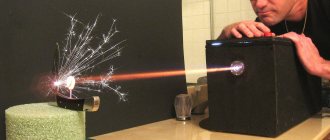Attention! Drug use causes irreparable harm to health and poses a danger to life!
The drug market is under constant control. This forces addicts to look for new sources. For example, pharmaceuticals with a narcotic component. Codeine is one of them. Its long-term use leads to the development of addiction, which negatively affects the condition of internal organs. Most of the therapy is carried out in a hospital setting due to severe withdrawal symptoms or withdrawal symptoms.
General information
Codeine is an alkaloid from the sleeping poppy. In its effect on the body, it is similar to morphine, but has a weaker effect. Opium contains approximately 0.1 to 2% codeine, while morphine contains 5 to 10%.
Codeine began to be used in pharmacology due to the fact that it strongly depresses the central nervous system. The most severe decrease in the activity of the cough center occurs. When taken in doses, drugs containing codeine relieve pain and eliminate cough, but only in the right dose. As the dose increases, neuronal damage occurs and the functioning of the liver, kidneys and heart is disrupted.
Codeine is added to cough syrups and painkillers. Basically, combinations of codeine with ibuprofen or paracetamol are made. Codeine-based cough syrups have been used in drinks since the 70s. Such “cocktails” are called “purple drank”.
Despite the great popularity among young people and the creation of an entire “cultural” movement, attention to codeine-containing drugs and their use appeared only after they began to be used to create desomorphine (the drug “krokodil”) at home.
The starting materials for the preparation of the drug desomorphine are cheap codeine-containing drugs: Pentalgin, Pentalgin Plus, Sedalgin.
Taken from a scientific article: Study of the spectroluminescent properties of codeine with the aim of determining it in certain drugs. Authors: V.V. Nemikhin, S.V. Kachin, T.S. Shakhvorostova.
Historical facts
Since the 19th century, codeine has been used as a cough tincture. In Russia, one of the first codeine-based remedies was Bekhterev's mixture. It relieved cough well, but was addictive. At that time little attention was paid to this.
Since the second half of the 20th century, codeine began to be used in cough syrups. The medicine really helped in the fight against cough, but had a large number of side effects. This forced insurance companies to conduct additional studies, during which it was determined that such drugs should not be given to children under 12 and pregnant women.
In the late 1970s, cough syrups gained popularity as cocktails. Their signature purple color became the basis for creating a new movement in hip-hop music. In the 1990s, rappers constantly starred in videos with white cups containing purple cocktails. These cocktails were based on the same cough mixtures with codeine.
Codeine was addictive and had a toxic effect on internal organs, which is why people who became dependent on such a drink died at a young age of up to 30 years.
In addition to using cocktails with cough syrup, drug addicts have appeared who use a large number of drugs in tablet and liquid form. Later, based on these drugs, they began to “cook” the drug “krokodil”, which is based on codeine. This drug has many side effects. Causes inflammation and decomposition of blood vessels and skin.
Given the demand for codeine drugs among drug addicts and the risk from home-made drugs, sanctions on codeine drugs were introduced. In Russia, the free sale of drugs containing codeine is prohibited. Violating the law can result in imprisonment for up to 12 years.
Effect on the body
In its pure form or in the form of syrup or cough tablets, codeine is toxic. The effect of codeine is similar to morphine. Both of these drugs are opiate receptor agonists. This means that they affect the body in the following ways:
- depress the respiratory center;
- disrupt the functioning of the heart causing arrhythmia, extrasystole, myocardial ischemia;
- inhibit the cough and cardiovascular centers;
- disrupt metabolic processes in the liver;
- reduce intestinal tone, slow down peristalsis;
- slow down metabolism in the liver and kidneys;
- influence the reaction, reducing the excitability of all sensory receptors;
- disrupt thermoregulation, reducing body temperature;
- reduce blood pressure and heart rate;
- suppress appetite.
Codeine affects pain receptors, increasing their threshold of excitability; in simple words, it reduces pain.
Using codeine with alcohol (as in popular purple cocktails) poses a high risk of developing toxic hepatitis. When combined with alcohol, processes in the central nervous system slow down even more, up to loss of consciousness.
Partial agonists of opioid receptors (codeine-containing drugs) have a pronounced effect on the central nervous system. It has an analgesic, hypnotic, and antitussive effect.
Taken from the book Pharmacology, edited by D.A. Kharkevich. 2017
Once in the body, codeine is immediately metabolized in the liver. The drug is excreted by the kidneys: about 10-15% in pure, unchanged form. When metabolized and processed by enzymes in the liver, codeine is converted to morphine and its metabolites. This causes the test to always be positive for morphine during drug testing.
Long-term use of antitussive drugs affects a person’s mental abilities. As a rule, the degradation of brain neurons leads to inhibition and decreased cognitive functions. Social perception is disrupted. The patient's ability to concentrate and learn is reduced. Races of ideas or, conversely, depression appear.
By binding to opiate receptors, antitussives lead to the development of physical dependence on the drug. Compared to heroin or morphine, this addiction develops more slowly, but it will happen in 100% of cases.
One of the side effects of codeine is constipation.
Taken from the book Pharmacology, edited by D.A. Kharkevich. 2017
Drugs containing the drug codeine also have a negative effect on the body. They cause attacks of bronchial asthma, the development of erosions and ulcers in the gastrointestinal tract, and reduce local and cellular immunity.
Consequences of long-term use
With prolonged use, codeine damages almost all body systems. Many developed pathologies turn out to be fatal.
- Hypotension - codeine causes a decrease in blood pressure, which leads to weakness and headaches.
- Muscular atrophy.
- Internal bleeding, anemia. As addiction develops, hemoglobin concentration decreases. The walls of the vessels become thinner, blood penetrates into the tissues through the resulting holes, and internal bleeding develops.
- Decreased respiratory rate due to codeine inhibition of the respiratory center. If the condition goes untreated, the amount of oxygen in the blood decreases.
- Poor digestion. Many drug addicts suffer from constipation and attacks of nausea and vomiting. Smooth muscles cease to perform the function of pushing food.
- Women who abuse codeine develop infertility, and men have decreased libido.
- Depression, mood swings. Psychoses often develop, and in people with mental illnesses the condition worsens.
- Absent-mindedness, memory problems.
At the last stage of addiction, drug addicts degrade and lose social skills.
How to recognize a drug addict
At the beginning of the development of addiction, it is difficult to determine that a person is becoming a codeine addict. You can only suspect it at the moment of the drug's effect or at the moment of abstinence (when the drug's effect has ended).
While the drug is in effect, the patient may be in a good mood. He is calm and reacts weakly to pain. He may have problems with orientation in space and time. The pupils are as narrow as possible, the heartbeat is slow, breathing is deep and slow. At the end of the drug's effect, deep sleep occurs.
In a state of withdrawal, the patient is irritable. He constantly goes into conflict for no apparent reason, constantly looking for something. Money or jewelry may disappear from the house. In a state without drugs, a person is capable of deception and even physical violence for the sake of a new dose. At this time, his eyes constantly dart, sudden movements appear, and his speech is fast, loud, but slurred.
The appearance of a large number of packages of cough suppressants can lead one to believe that it is a codeine addict. In the state of drug action, the patient does not think about disposing of the packages, and in the state of withdrawal he is concerned about finding a new dose.
Death from an overdose of opiates (including codeine) is associated with intoxication in 44%; in more distant periods, death occurs due to pneumonia or myocardial dystrophy. More rarely due to sepsis or posthypoxic encephalopathy.
Taken from the scientific article: “TOXICOLOGICAL CHARACTERISTICS OF OPIATE POISONING” author: Shigeev S.V.
But it is difficult to determine by appearance that a person is addicted to such a drug. Testing is always necessary to confirm.
Get help now
Do any of your relatives or friends have an addiction? Have you tried in every possible way to help, but as a result the person still returned to his past life?
You are not the first to encounter this problem, and we can help you.
We guarantee anonymity, we will persuade you to undergo treatment, and we will help you choose a center.
Call us
+7
or
Call me
History of creation
The emergence of codeine as a drug component is closely related to the history of opium. In 1704 it was very common in England. In this country, it was sold in the form of an elixir to relieve pain. 100 years later in Germany, as a result of numerous experiments, scientists learned to isolate morphine.
In 1832, chemist Pierre Robiquet continued his study of morphine. He managed to synthesize codeine. The substance got its name from the Greek “kodeia” - poppy head.
Tests for codeine
During metabolism, codeine is converted to morphine by liver enzymes. This allows codeine to be detected in the blood using standard morphine tests. There are practically no specific tests for codeine.
Codeine can be detected in the same ways as other drugs:
- using a urine test;
- when examining hair;
- using blood and saliva tests.
The most common method for determining the presence of such a drug in the blood is the use of test tablets. Such rapid tests have the ability to detect several drugs at once. This is important because codeine addicts often use other substances to enhance the drug effect.
Rapid tests or test tablets are not beneficial because they do not have legal force. But they are suitable for confirming the fact of use among family members. In judicial practice, a blood test or laboratory urine test is used.
In addition, the test strips do not indicate the dose of the drug used. This can be misleading, especially when testing people who actually use cough drops for medicinal purposes.
Among the test systems, the following companies have proven themselves well:
- Narcoscreen test strips.
- tablets "ImmunoChrom";
- testing from ;
- test systems "Boson" and "Wondfo";
Laboratory reagents and special equipment are used to determine the presence of drugs in the blood. Codeine can be detected using immunochromatography.
The amount of antibodies to a specific type of drug can be determined in the patient’s blood. This allows us to reliably say whether there has been long-term use.
Nail and hair analysis is very rarely performed due to the cost of the study. Such tests are useful because they allow you to determine whether you have used drugs in the past.
Laboratory tests cannot be fooled. If you ensure the correct collection of biological fluid for research, the result will be 99.9% correct.
It is not enough to have test systems or access to a laboratory. To obtain accurate information, you need to know what biological medium to take for analysis. This is due to the fact that the drug does not appear in the urine immediately, and does not last long in the blood.
Terms of sale of narcotic drugs
The drug is freely available. This is one of the reasons for its popularity and demand among drug addicts. Codeine was planned to be included in the list of prescription drugs in 2010. But the draft law was postponed.
Some medications contain enough codeine to make you feel euphoric. The drug addict intentionally increases the dosage, which has a negative impact on health. Buying many drugs at a pharmacy does not raise suspicion. Would a pharmacist hesitate to buy aspirin? It is unlikely that this is a common and fairly common medicine.
In terms of popularity, codeine is comparable to desomorphine and other readily available narcotic substances. A drug addict is able to prepare a dose using various pharmaceutical drugs. It turns out that while codeine is on the market, the number of drug addicts is growing. This is not the fault of pharmaceutical companies, since they produce medicines, not drugs. It's all about the person.
If you use a codeine-containing drug to achieve euphoria, addiction is inevitable. Sometimes even one dose is enough to cause serious harm to the body. With constant use of codeine, a person changes beyond recognition in just a few months.
How long does it stay in the body?
Unlike other drugs, codeine is metabolized quickly, but its onset of action is slower. The standard route of administration is oral (by mouth), except in cases of injecting drugs prepared in artisanal conditions.
The drug begins to act approximately 1 hour after use. This time is needed for the drug to enter the liver and begin to undergo enzymatic processes.
After 1 hour, metabolites can already be found in the blood. After another 2-5 hours, the drug appears in the urine.
The metabolic rate depends on what dose of the drug was taken, how long the drug was used, and whether there are any additional diseases of the internal organs.
How long does it stay in the blood?
Codeine stays in the blood for up to 12 hours. There are cases when the drug can be detected in the blood within 48 hours. Everything is individual. Basically, the time depends on the person’s body weight, length of use and the functionality of the liver and kidneys.
How long does it stay in urine?
The drug can be detected in urine 2-4 days after the last drug intake. From 80 to 90% of codeine is excreted through the kidneys in the form of metabolites, and 10-20% is excreted unchanged.
In 198 patients, in the first 48 hours, morphine breakdown products were detected only in the urine.
Taken from the scientific article: “TOXICOLOGICAL CHARACTERISTICS OF OPIATE POISONING” author: Shigeev S.V.
A urine test always shows an accurate result. If after 4 or more days the test is again positive, it is worth considering whether the person has used again.
How long does it stay in hair?
Hair can accumulate the drug and retain it for 6 to 12 months. If we ignore the cost of such an analysis, it is very informative. Considering where drug metabolites accumulate in the hair, the last time the drug was taken can be determined.
This analysis is problematic for people who constantly cut their hair short. In this case, no traces of codeine use may be found in the new hair at all.
How long do drug addicts live?
Codeine is a toxic substance. People who use codeine drugs die at a very young age. Typically, codeine is added to cough syrups or combined with non-steroidal anti-inflammatory drugs. The latter can cause ulcers and intestinal erosions. Ulcers and gastritis, in turn, often become malignant and progress to the stage of cancer.
Destruction of liver hepatocytes and nephrons leads to acute liver or kidney failure. Sometimes the cause of death is respiratory or cardiac arrest.
Given the frequent combinations with alcohol, the drug addict experiences irreversible changes in the brain. Frequently using patients completely lose the ability to think normally and perceive the outside world.
The average life expectancy of people addicted to codeine is 30-32 years, subject to active use. If used periodically, such people live 3-5 years longer.
Consequences of chronic drug addiction
Chronic intoxication triggers irreversible degenerative processes in the central nervous system and changes the course of physiological processes in the body.
Consequences:
- Encephalopathy;
- Acute heart failure;
- Acute respiratory failure;
- Toxic hepatitis;
- Acute renal failure;
- Trophic ulcers;
- Immunodeficiency.
The body of a chronic drug addict is exhausted, death occurs due to dysfunction of vital organs and systems.
Life expectancy of a drug addict
Codeine addicts live no more than 5–7 years with systematic use. But, as a rule, death occurs much earlier from secondary pathologies and infections.
Codeine analogues
You need to understand that various combination drugs whose active ingredient is not codeine are not analogues. Codeine always acts the same in each drug.
For example, there may be a combination of a narcotic with ibuprofen or paracetamol. These are different drugs, but here and there they contain codeine, which has no exact analogues.
Drugs with a similar effect to codeine are, first of all, narcotic analgesics or opiate receptor agonists:
- morphine hydrochloride;
- methadone;
- promedol;
- nalbuphine;
- tramadol;
- thebaine;
- butorphanol
The most commonly used drugs that contain codeine are:
- Codelmixt;
- Solpadeine;
- Terpincode;
- Vicodin.
On the drug market, analogues of codeine are: heroin, opium, desomorphine. All drugs have a similar but more pronounced effect. Accordingly, such drugs are much more toxic than pure codeine.
Medicinal effectiveness of codeine for cough
Opiate-containing drugs have a central effect. Cough is eliminated by eliminating the cough reflex. The opiate has a stimulating effect on the opioid receptors of the brain, helping to reduce the excitation of the center that signals coughing.
When taken orally, a person stops coughing after about half an hour, the effect lasts about 6 hours.
There are many antitussive codeine pharmaceuticals. Let's look at some of them:
- Codesine
- Kodarin
- Terpincode
- Solpadeine
- Tedein
How addiction is formed
Like any opioid receptor agonist, codeine causes physical dependence in 100% of cases, although slightly slower than its analogues. The formation of addiction occurs in stages. If you prevent the formation of addiction in the first stages, the rehabilitation process will be much faster and easier.
The dependency is formed like this:
- use of codeine-containing substances or drugs;
- stimulation of opioid receptors and release of their mediators;
- the emergence of psychological dependence on exogenous stimulants of opioid receptors;
- depletion of endogenous reserves of hormones and mediators;
- the formation of physical dependence on the constant supply of agonists from the external environment;
- the emergence of persistent physical and psychological dependence on drugs containing codeine.
In this sequence, persistent addiction develops, which cannot be cured on your own at home. Only proper rehabilitation by professionals will help a person.
How to speed up elimination at home
Self-medicating and accelerating drug elimination at home is dangerous for the patient’s life. This is due to the exaggeration of drugs that people take to improve metabolism and elimination of the drug.
You can remove the drug at home only using standard methods. Such techniques do not harm the patient and activate his internal reserves.
What to do at home:
- Take sorbents. The route of administration of codeine is mainly oral, so sorbents in the first hours help reduce the absorption of the drug into the blood.
- Drink plenty of fluids. When drinking alkaline water (Borjomi, Essentuki) or even ordinary water, filtration in the kidneys accelerates. Accordingly, drug metabolites are eliminated from the body faster.
- Perform minimal physical activity or exercise. The more activity, the higher the body temperature. The higher the body temperature, the faster the metabolism and elimination of the drug.
If you took the drug no later than 2-3 hours ago, you can try gastric lavage. Drink 1-1.5 liters of water and artificially induce vomiting by pressing your fingers on the root of the tongue.
You can drink tea with a choleretic effect or perform liver tubage. The action of opiate receptor agonists leads to stagnation of bile and a decrease in the rate of drug elimination from the body. If you “start” the liver, the elimination of drugs will accelerate.
Danger of consumption methods
Pharmacy codeine is available in two forms - tablets and syrup. Each is used among drug addicts. This method of use does not pose any danger. Due to the fact that most of the administered dose is excreted from the body, the likelihood of developing dependence is low.
Most often, drug addicts resort to intravenous or intramuscular injections of codeine prepared at home from pharmacies. There are several dangers to this method:
- high risk of contracting hepatitis C, HIV/AIDS, and other infections due to the use of one syringe by several people;
- primary and secondary infections due to non-compliance with personal hygiene rules;
- repeated use of the same needle damages the walls of the veins, these places become covered with scar tissue over time;
- due to rapid injection, pseudoaneurysms are formed between the layers of the artery;
- toxic substances in homemade codeine lead to infection of the body, blood clots, and pulmonary edema;
- When administered intramuscularly, there is a high risk of nerve damage.
Detoxification in hospital
It is much safer to speed up drug withdrawal in a hospital. This is due to the fact that you can constantly monitor the functioning of internal organs, in particular the heart.
In a hospital, you can easily use infusion therapy with 5% glucose, which accelerates the elimination of the drug and at the same time nourishes the tissues with energy.
Sorbents are also used in hospitals. The main advantage of inpatient detoxification is the availability of symptomatic therapy. Often, during “cleansing”, disturbances in the functioning of the heart or kidneys occur. In a hospital in such cases, it is possible to correct the functioning of these organs and reduce the risk of side effects from codeine.
Side effects
Experts usually divide side effects from codeine drugs into 2 groups - more severe and less severe. Codeine medications have the most dangerous effect on children.
In a growing body, sometimes not enough enzymes are produced to process the medicinal drug, and the pain-relieving effect of the drugs may be much weaker than in adults. At the same time, the side effects in children will be fully manifested - sometimes even to the point of poisoning.
The main (less severe) side effects of codeine are:
- drowsiness, absolute equanimity, indifference and other symptoms of sedation;
- nausea and vomiting;
- stool retention, pain and cramping in the abdomen;
- dry mouth;
- skin rashes (minor);
- dizziness, etc.
If the dose is exceeded or codeine drugs are combined with other drugs, the side effects can be much stronger:
- respiratory depression (a classic consequence of opiate overdose);
- slow pulse and heart rate;
- low pressure;
- hallucinations;
- confusion;
- problems with urination.
Overdose
Overdose occurs less frequently in codeine addicts than in morphine or heroin users. But when it occurs, it is more difficult to save a person from negative effects due to the fact that codeine is used together with drugs that have a toxic effect on the liver, causing ulcers, osteoporosis, constipation, bronchospasm, arrhythmias and other complications.
With long-term use of codeine-containing drugs, dependence (physical and psychological) is formed.
Taken from the book Pharmacology, edited by D.A. Kharkevich. 2017
How to recognize
The clinical picture of a codeine overdose is similar to that of a heroin or morphine overdose. It is impossible to determine on the spot what kind of substance this happened.
The main signs of an overdose are:
- miosis;
- clouding of consciousness in the form of stupor, stupor or coma;
- reducing the number of respiratory movements to 5-8 per minute;
- blood pressure drop below 100 to 70 mm. rt. Art.;
- bradycardia (heart rate below 55 per minute);
- drop in body temperature.
The situation may give you an idea of what substance the overdose occurred. If there are syringes and needles, it is not codeine, but most likely heroin or morphine. If there are packets of tablets or cough syrup - codeine.
What to do
As soon as you are sure of your safety, call an ambulance. You can independently turn the patient to one side by placing a cushion under the head. This way you prevent aspiration of vomit. If you have already vomited, you need to clean your mouth with a rag or handkerchief wrapped around your finger.
If there is no breathing or heartbeat, proceed to chest compressions and artificial respiration. Do heart massage at a frequency of 120 shocks in 60 seconds. Every 30 times you need to inhale mouth-to-mouth. It is better to do this through gauze or a cloth to prevent the transmission of infectious diseases from a person with an overdose.
The ambulance can administer an antidote to opiates - naloxone. Codeine is metabolized into morphine, which allows naloxone to be used as an antidote. But it is worth knowing that the wrong dose of the antidote is dangerous for the patient’s life.
The ambulance will perform gastric lavage, thereby reducing the symptoms of overdose.
Composition of the drug
What substances are in codeine can be judged by synthesis. The morphine molecule is injected with dimethyl sulfate in a methanol solution of sodium methoxide. Next, the reaction mixture is neutralized, and the solvent is distilled off. The resulting aqueous solution is mixed with a concentrated alkali solution. There is another way. It consists in the precipitation of morphine, which has not reacted with ammonia.
Since the drug is prohibited for sale, drug addicts “cook” it themselves from pharmaceutical preparations. Therefore, traces of vinegar, gasoline, alkali, and soda can be found in such codeine.
Rehabilitation
Rehabilitation of codeine addicts should take place in a hospital. Withdrawal in such patients can be with withdrawal, like in heroin addicts. Codeine is highly addictive. Therefore, dependent people require constant work with a psychologist. In addition, resocialization and work with codependent people play an important role in the rehabilitation of such people.
What does rehabilitation include:
- cleansing the body;
- relief from withdrawal symptoms;
- treatment of concomitant diseases that arose while taking codeine-containing drugs;
- social rehabilitation;
- work with a psychologist and group rehabilitation;
- resocialization and return to society.
Remember that there is no recovery from drug addiction. A person can go into a phase of stable remission. But the risk that a person will want to use again always remains. Therefore, the more correctly the rehabilitation is carried out, the lower the risk of failure after treatment.
If during the rehabilitation process you use distraction therapy with a religious bias, the result will be better than rehabilitation without a religious component.
Taken from the dissertation: “Resocialization of drug addicts: socio-psychological aspects” by Kutyanova I.P.
Drug addiction treatment
Treatment should be initiated as soon as possible in persons with documented codeine dependence. This will reduce the toxic effect of the substance and the likelihood of critical damage to internal organs.
Treatment begins with abrupt withdrawal of the drug and administration of an antidote in a dosage corresponding to the severity of the condition.
To cleanse the kidneys, liver and other organs of codeine metabolites, detoxification must be carried out. After examination and medical history, the doctor chooses one of three methods:
- Forced diuresis with glucose and sodium chloride. Contraindication: chronic kidney pathologies.
- Enterosorption. The main task of this method is to cleanse the liver, and not the digestive system, as in the case of poisoning with other drugs. A solution of potassium permanganate is administered using a probe or enema. Most often, there is no need for sorbents.
- Hardware blood purification. Also aimed at cleansing the liver. It is carried out using one of the following methods: hemosorption - the drug addict’s blood is directed through a special system into a filter and then poured back;
- plasmapheresis - after separation from plasma and dilution with saline, the cell mass is infused into a vein.
Immediately after cleansing, the drug addict is given a course of vitamin therapy. These can only be B vitamins, which are necessary for the functioning of the nervous system, or multivitamins that will support the entire body.
How addiction is formed
Single use of codeine does not lead to addiction. This will require at least 30 injections. The peculiarity of codeine addiction is its slow development, compared with other opioids.
At the first stage, there is no clinical picture of withdrawal syndrome yet. Slight anxiety and tension may be noted after two to three days from the moment the injections are stopped. This phase is also characterized by the following conditions:
- sleep disturbance, but the drug addict still manages to remain alert and well-rested;
- decrease in urine volume;
- constipation
Tolerance to codeine gradually increases. The duration of the stage is up to six months. The drug addict manages to hide his addiction.
With the strengthening of mental dependence and the development of physical dependence, the second stage begins. Tolerance to the drug increases more and more, and the previous sensations fade away. Without another dose, a person looks lethargic.
By the third stage, the frequency of codeine use increases. Injections are given every 4–5 hours, otherwise the addict cannot move or contact others.
How long do drug addicts live?
Codeine is a toxic narcotic. People who use it die at a fairly early age. The components from which the drug is prepared can cause ulcers and erosions of the intestinal walls. These conditions can develop into cancer.
On average, codeine addicts live from 5 to 20 years after starting to take the drug. Much depends on their general health.
Metabolites destroy liver hepatocytes and nephrons. The result of this is kidney and/or liver failure. Sometimes cardiac and respiratory arrest leads to death.
Rehabilitation
Treatment of drug addiction must be comprehensive. The medication part is complemented by work with a psychologist - individual and group. The meeting schedule is set on an individual basis.
The subject of discussion is the reasons that prompted the development of passion for codeine. Scenarios for solving problems in other ways that are not related to addictions are analyzed. The sensations that the drug gives to the addict are carefully analyzed. This way the patient can find a healthy alternative.
Why you can’t treat yourself at home
Depending on the codeine, the worst thing is withdrawal symptoms. In terms of the severity of its course, it is difficult to compare it with opium withdrawal, but even in this case, vital functions are critically impaired. Without the necessary equipment and medical training, it is difficult to provide the necessary assistance.
As a result of codeine abuse, breathing problems are often observed, and drug addicts often fall into a coma. Such conditions require connection to a ventilator and administration of medications. The danger is a critical decrease in blood pressure.
Working with codependents
In addiction medicine and psychology, codependents include close relatives of the drug addict with whom he lives. It has been experimentally proven that these people, over time, cease to perceive addiction as a disease, finding excuses for it.
Codependents should also undergo psychological therapy. At the meetings they receive information about codeine addiction and the dangerous consequences of it.
Ambulatory treatment
This form of therapy became available with the advent of private drug treatment clinics. It requires complete willingness on the part of the addict to work on the problem. Outpatient treatment is possible only before the onset of physical dependence. It is also a prerequisite to live in conditions that will not contribute to a return to drugs.
The drug addict, together with a curator and psychologist, develop a program. It states what a person should do on his own at home. Meetings at the clinic are also provided.
Resocialization
Narcologists call this stage the final stage in drug addiction treatment. Only those who have successfully completed drug therapy and show clear signs of remission are admitted to it.
Resocialization can be group or home. In the first case, it is implied that former drug addicts will unite and live in a commune. In it they learn to manage time and occupy free time without drugs. Retraining courses are often organized for them. Home resocialization is similar and is suitable for those who have the opportunity to live outside an environment where drugs and alcohol are common.
Resocialization should be accompanied by consultations with a psychologist.
How to quit on your own
Abuse of codeine, like other opioids, leads to deterioration of vital functions. If you fight it yourself, it will lead to worsening disorders and even death. It is problematic to cope with withdrawal symptoms without medical intervention. The antidote is available only to special teams, and without it it is impossible to stop the toxic effect of codeine. Depression of the respiratory center requires the use of a ventilator, which is available only in medical institutions.
Bibliography:
- Wikipedia. Codeine.
- Federal clinical guidelines for the diagnosis and treatment of withdrawal syndrome
- Codeine Addiction and Abuse.
- Author Veronica Dovnich
Editor Artyom Emelyanenko
Coding
Coding involves getting rid of addiction in 1 appointment with a doctor or person who conducts the session. In practice, efficient coding does not exist. Evidence-based medicine does not provide examples of successful coding that would help the patient.
All coding features involve intimidation of patients or psychological pressure. Such methods may not be effective for everyone, mainly, in rare cases, for alcoholics and smokers. This doesn't help with drugs.
Why you can’t do it at home
Drug addicts who are addicted to opioid agonists require daily monitoring of their health and constant psychological work. Without control, a breakdown occurs in the first days of abstinence, and all the work in the rehabilitation center will be in vain.
Self-administered or outpatient treatment should only be used by highly motivated people. In fact, these are only a few users. The rest relapse in the first days or weeks after stopping taking the drug.
It is necessary to carry out daily psychological work. It is important to restore the “I” destroyed under the influence of drugs, to allow the patient to communicate with other patients and not to leave him alone.
After drug withdrawal, depression may occur, which leads to suicidal thoughts. In an outpatient setting, it is difficult to monitor this and therefore it is impossible to properly treat this condition.
The important point is that a person who wants to quit does not have time to go to the doctor for a consultation, or is simply too lazy. Thus, outpatient treatment is not suitable for the rehabilitation of opiate addicts.
Working with codependents
Codependent people are relatives, parents, husband or wife. Such people suffer first of all together with the dependent person. Therefore, they can be both the cause of a new breakdown and a reason to stop using.
Codependents must be able to recognize attempts at new use and know how to prevent them. It is believed that close people do not believe or do not see the problem until the last moment. The task is to teach them not only to see the problem of drug addiction in their loved ones, but to tell them how to overcome it.
Treatment in hospital
In a hospital, treatment occurs not only with drugs. Use distraction therapy methods. For example, they conduct classes for patients in addiction groups, engage in occupational therapy, and help establish connections with others.
There is no specific drug therapy. The doctor’s task in a hospital is to eliminate the consequences of the toxic effects of drugs on internal organs, ensure the normal functioning of the heart and liver, and monitor normal diuresis.
In case of a sharp deterioration in the condition, a team of resuscitators is always on duty in the hospital. Although with proper treatment the need for their help is minimal.
During withdrawal in a hospital, you can put the patient into an artificial coma. Due to this, withdrawal will be painless and without harm to the patient. Treatment is individual. There are no strict algorithms or recommendations.
In case of mental health problems in a hospital, tranquilizers or psychotropic drugs can be prescribed in the correct dose. Treatment with such drugs at home can cause the death of the patient.
How to quit on your own
Out of 10 people, only 1 can quit drugs on their own. To do this, it is necessary to eliminate all contacts with those who use or distribute any drugs. This way there will be less temptation to use again.
You can’t put off the “tie” for other days. If you start, then from the day you decided. Putting it off until later will result in no results.
It is necessary to prepare for withdrawal and withdrawal symptoms. Eliminate all social contacts that could trigger a breakdown. The causes of disruption are often conflicts at the everyday level with family members. Therefore, you need to be mentally prepared for this or wait out the critical moment in another place.
You definitely need to find something to do that will distract you from the thought of using drugs. For example, work that brings pleasure, playing sports, walking, reading books, etc.
Resocialization
Resocialization is the last stage in rehabilitation. As soon as a person recovers from addiction, he needs to return to society. To do this, you need to help him recover, give a new assessment to his new self. It is important to restore faith in your capabilities and get rid of the mental cliché of an addict.
It is very difficult to do this on your own. You need to constantly communicate with other people or a psychologist. An excellent way to resocialize is to learn a new profession or master a new field of activity.
As soon as a person returns to society, the risk of relapse is reduced to a minimum. If this does not happen, it is necessary to undergo further rehabilitation, otherwise there will be no point in it.
Therapy for codeine addiction
Qualified treatment of codeineism is carried out only in a hospital setting under the supervision of qualified doctors. Trying to help a drug addict on your own will only make the situation worse.
Competent therapy includes the following steps:
- Removing narcotic toxic substances from the body, relieving withdrawal symptoms. It is carried out by gastric lavage, administration of antidotes, glutamic acid and injectable insulin. Treatment of concomitant diseases is carried out in parallel.
- The rehabilitation period involves cooperation with psychotherapists and group therapy.
- A period of resocialization, with the final return of the former drug addict to society.











